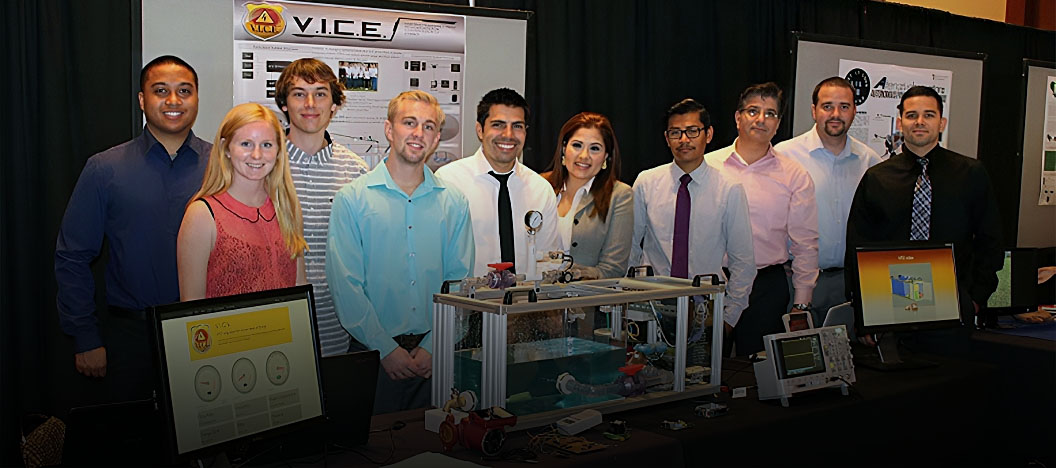Design Day 2025
Engineering Senior Design Day 2025 showcased innovative design projects the undergraduate Engineering students create throughout their academic year. This event is a combination of the Engineering Senior Design classes in Aerospace Engineering, Civil, Construction & Environmental Engineering, Electrical & Computer Engineering, and Mechanical Engineering.
For an in depth look at all of the senior design projects for 2025, please visit our digital 2025 Senior Design Day booklet.
Engineering Senior Design Day 2025 was held in Viejas Arena on May 7, 2025 from 1:00pm - 4:00pm (PST).
Design Day Projects
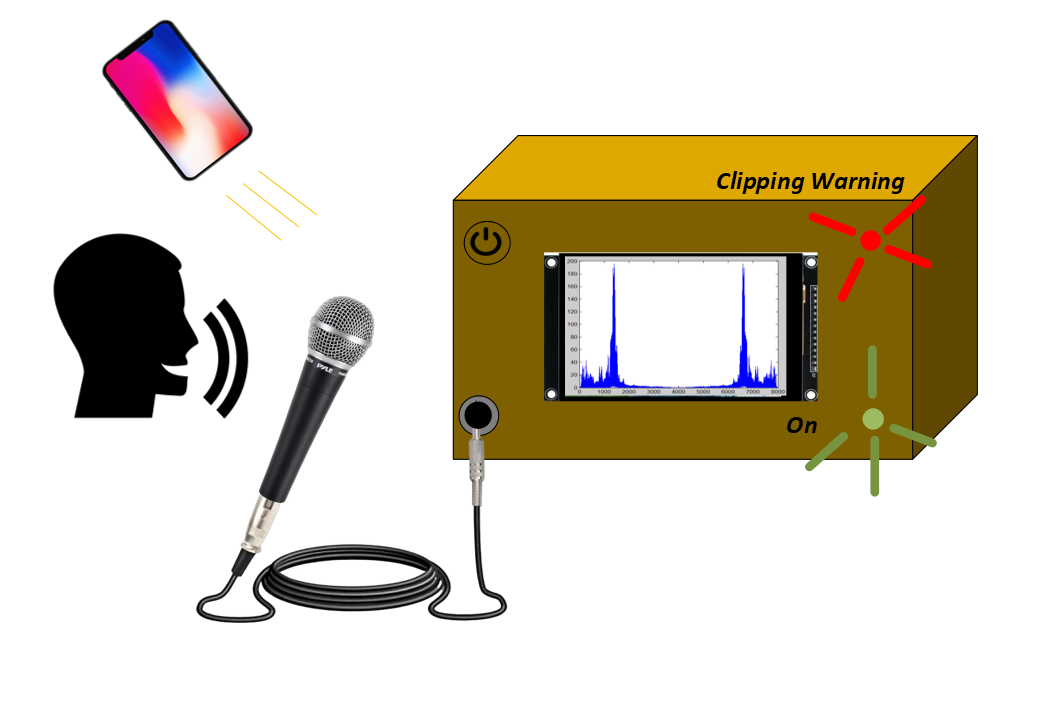
The system takes in an audio signal from a microphone and uses the STM32G491RE microcontroller to filter and display the different audio components of the signal. The electronics are housed inside a cabinet and output to an LCD display. The device also features two LEDs, one that lights up green when the device is on and one that indicates when the device is receiving too loud of an audio signal to process.
- Team Members: Nero Hamidi, Enrique Rodriguez, Auston Knight, Erik Shimizu
- Advisor: Prof. Barry Dorr - SDSU
- Team Noise Canceler's Video
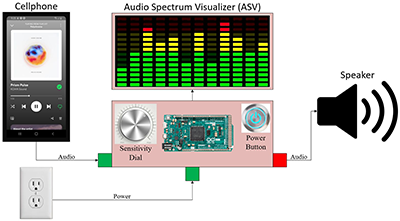
Our project is an audio spectrum analyzer, which takes an audio signal as input and outputs the volumes of different frequency bands on an LED display. It uses an Arduino Due for signal processing, which takes an analog signal in from a standard audio jack, does analog to digital conversion, and performs filtering and analysis on the signal stream. It uses an off the shelf addressable LED strip to display the volume, which will be mounted on a large wooden display for easy viewing.
- Team Members: Ryan Buss, Anish Singaram, Lars Lazar, Larissa Diaz, Abdullah Alabbas
- Advisor: Prof. Barry Dorr - SDSU
- Team ASV's Video
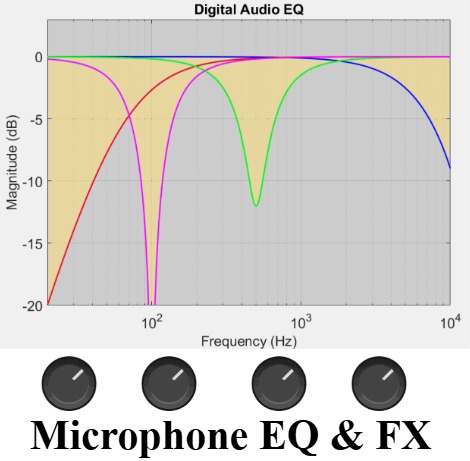
aztEQ is a compact, portable device that enhances the sound from a single microphone, before it is played through a speaker. The process begins by amplifying the signal from an attached microphone and sampling it. The sampled signal is then passed through a series of digital filters modifying the frequency content of the sampled audio. Utilizing the device's control knobs and buttons, the user alters the digital filters applied to obtain their desired audio profile.
- Team Members: Nathan Du, Quang Duong, Jesus Mazariegos, Jonathan Ogilvie, Jonathan Smith
- Advisor: Prof. Barry Dorr - SDSU
- Team aztEQ's Video
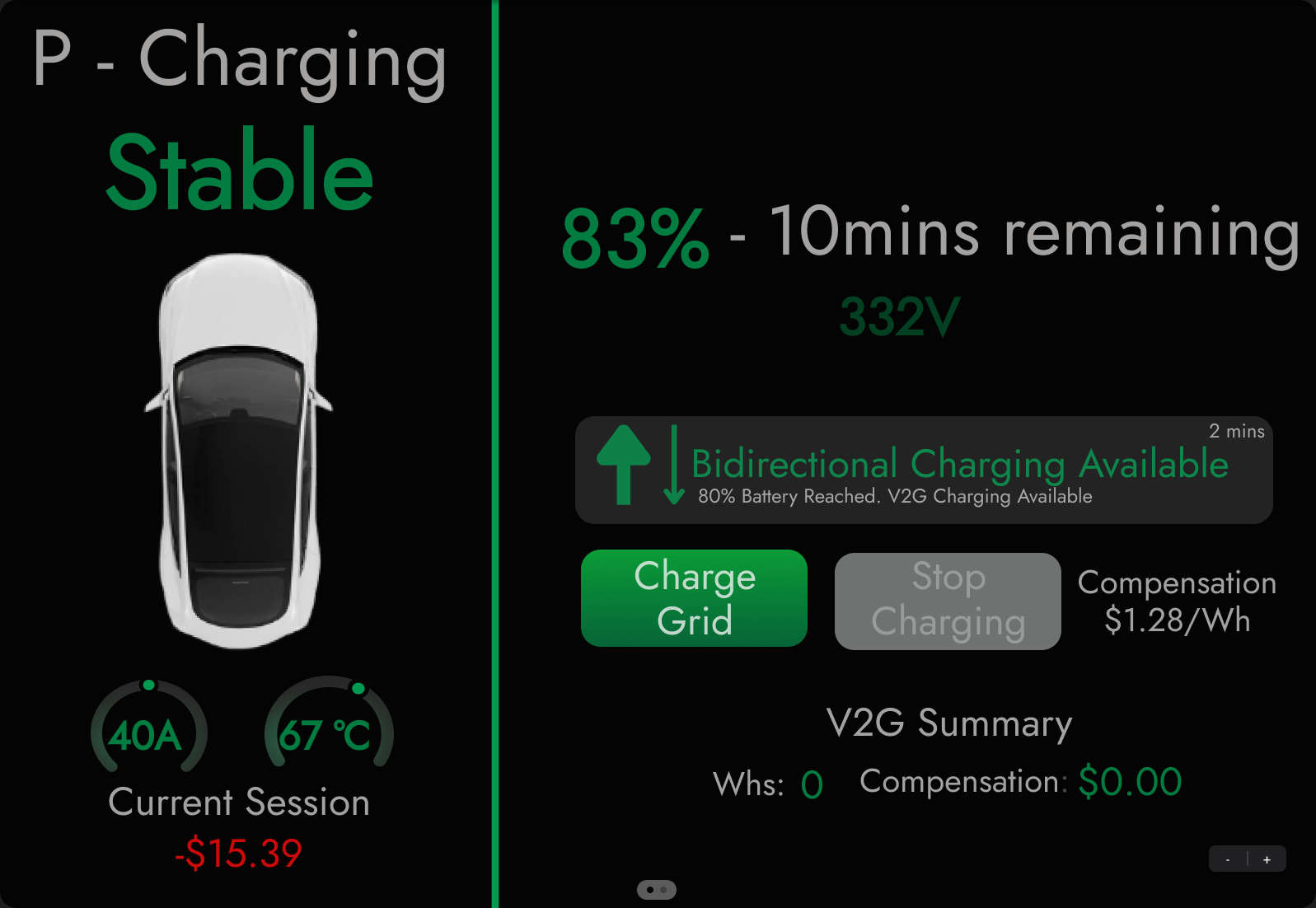
The Battery Management System (BMS) project focuses on augmenting the current capabilities of an already strained power grid. This is achieved through Vehicle-to-Grid (V2G) charging. V2G charging allows the user of an Electric Vehicle (EV) to send energy to the grid during peak-usage hours; this is financially incentivized with a credit to the EV user. Energy will be taken by the EV from the grid during off-peak usage hours. Adherence to charging protocols, ISO 15118 and SAE J2847/2, strengthen market-ready applications.
- Team Members: Jonah Laing, Aaron Tartz, Billy Sample, Mohammed Al-Sewaidi, Ryan Onofre
- Advisors: Prof. Saeed Manshadi - SDSU, Prof. Barry Dorr - SDSU]
- Sponsor: Sami Kibria - Rechargify
- Team BMS Project's Video
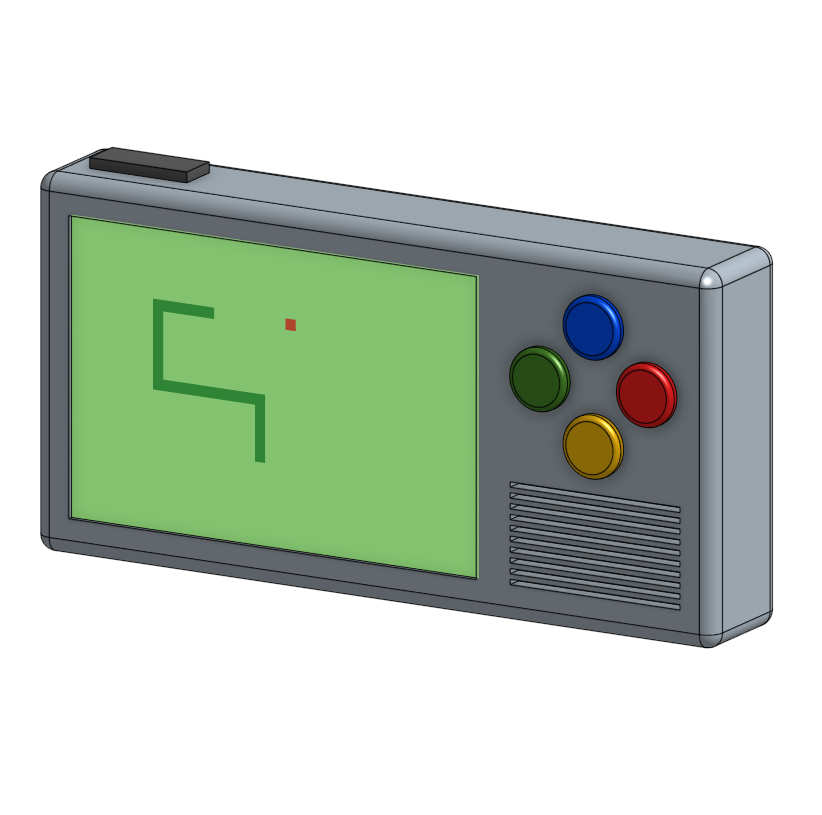
This handheld gaming device allows users to play video games on the go! With a massive 320 by 480 pixel, 16-bit color display, variable refresh rate speed using an innovating new technique, and crisp audio output, this device pushes its ATmega328P core to the limit! All firmware and games coded completely in embedded C with no external libraries and optimized for a total 2 KB SRAM and 32 KB flash program memory.
- Team Members: Nathan Johnson, Isabelle Ablao, Edward Garcia, Arthur Gratas, Dimitri Stassinos
- Advisor: Prof. Barry Dorr - SDSU
- Team Handheld Game Device's Video
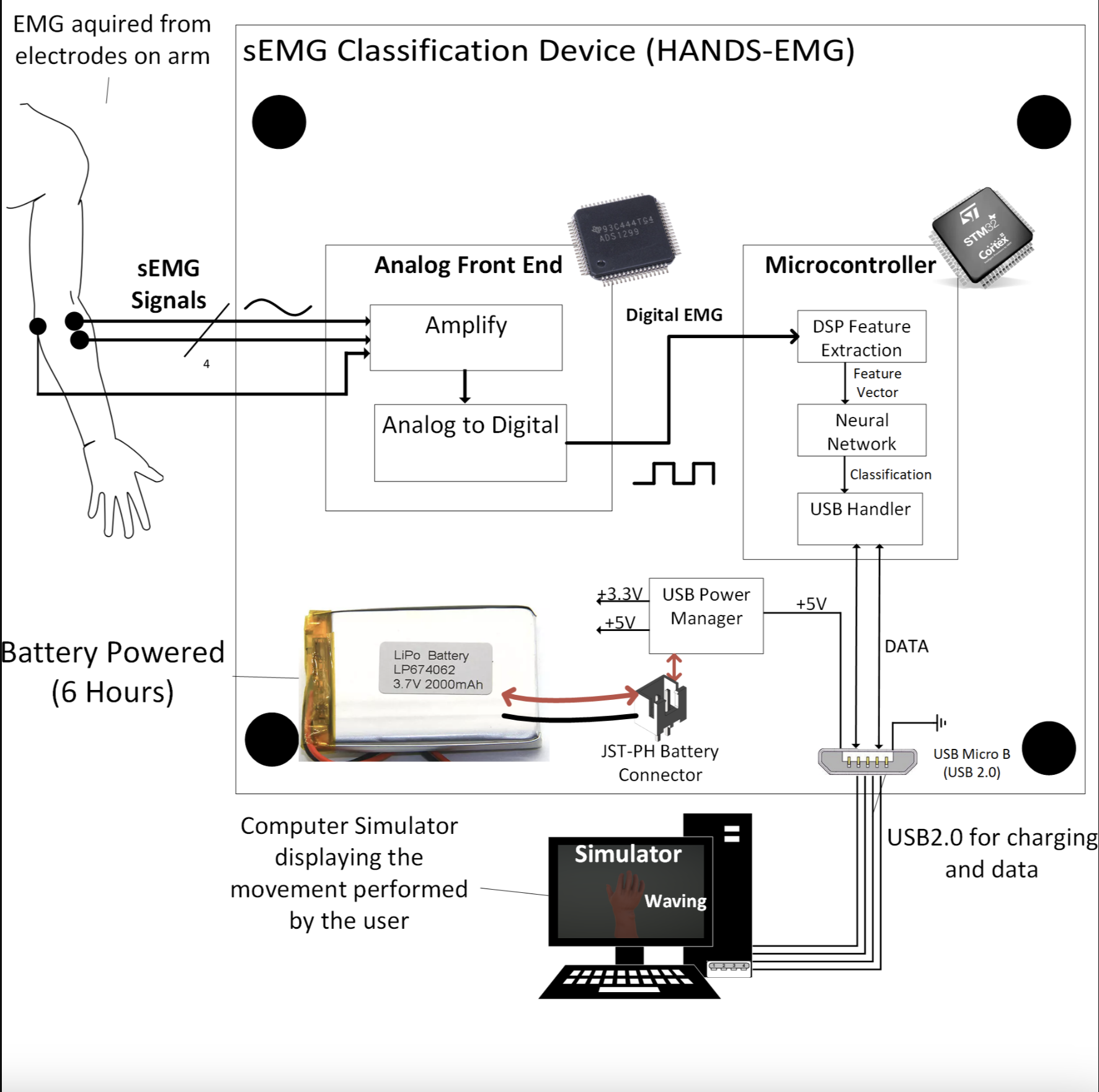
The HANDS-EMG device is a portable, battery-powered surface electromyography system that classifies hand movements using machine learning. It captures muscle activity signals from the forearm, enabling real-time, non-invasive monitoring and analysis. This technology supports applications in prosthetics and rehabilitation by providing accurate and efficient movement recognition. Designed for accessibility, HANDS-EMG offers a practical solution for enhancing user mobility and control.
- Team Members: Kelly Hubbard, Noah Marosok, Jayden Sumbillo, Blake Pearson, Kirk Young
- Advisors: Prof. Hakan Toreyin - SDSU, Prof. Barry Dorr - SDSU
- Sponsor: College of Engineering ECE Department through the Andrew Y. J. Szeto Rehabilitation Engineering and Assistive Technology Endowment Fund
- Team HANDS-EMG's Video
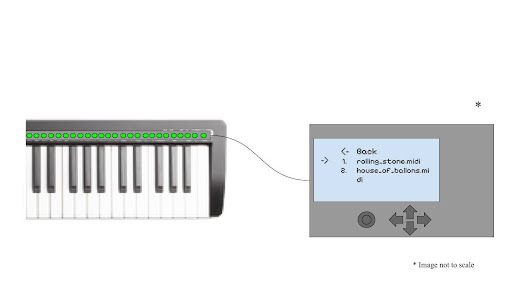
Our L.E.D Piano project serves as a way to introduce playing the piano to beginning and intermediate players. Its main objective is to have LEDs light up and indicate to the user which keys to play. The accuracy of these keypresses will be communicated with a controller that’s connected via the MIDI output. The data from the controller will then be processed and compared to the currently lit keys to determine the accuracy and display the accuracy on the controller’s internal display.
- Team Members: Emily Berkness, Miguel Dariano, Alvaro Lopez, Robert Masotti, Anabel Sanchez
- Advisors: Prof. Barry Dorr - SDSU, Dr. Scott Lipscomb - SDSU
- Team Ate's Video
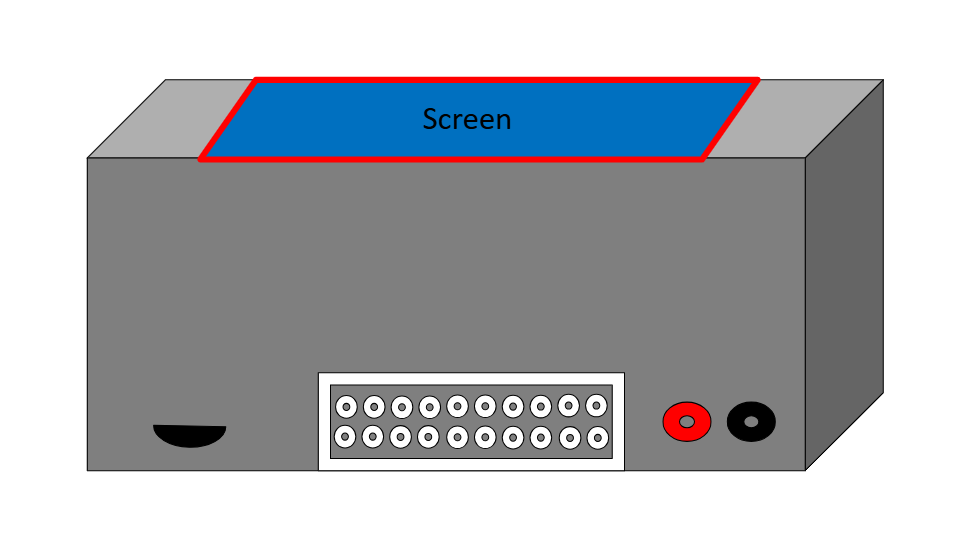
The MASIMO Short Break Detector integrates with a cable bend test machine and automates cable fault detection. Powered by an AVR128DB64 MCU, it supports AC/DC, halts tests on faults, and logs data to an SD card. A touch screen enables easy operation, enhancing reliability, efficiency, and accuracy in cable testing.
- Team Members: Jonatan Guerra, Kaitlyn Huynh, Phillip Mcleroy, Quincy Nguyen, Ryan Walb
- Advisors: Prof. Barry Dorr - SDSU, Glenn Pohly - Masimo Corporation
- Sponsor: Masimo Corporation
- Team S.D. Cable's Video
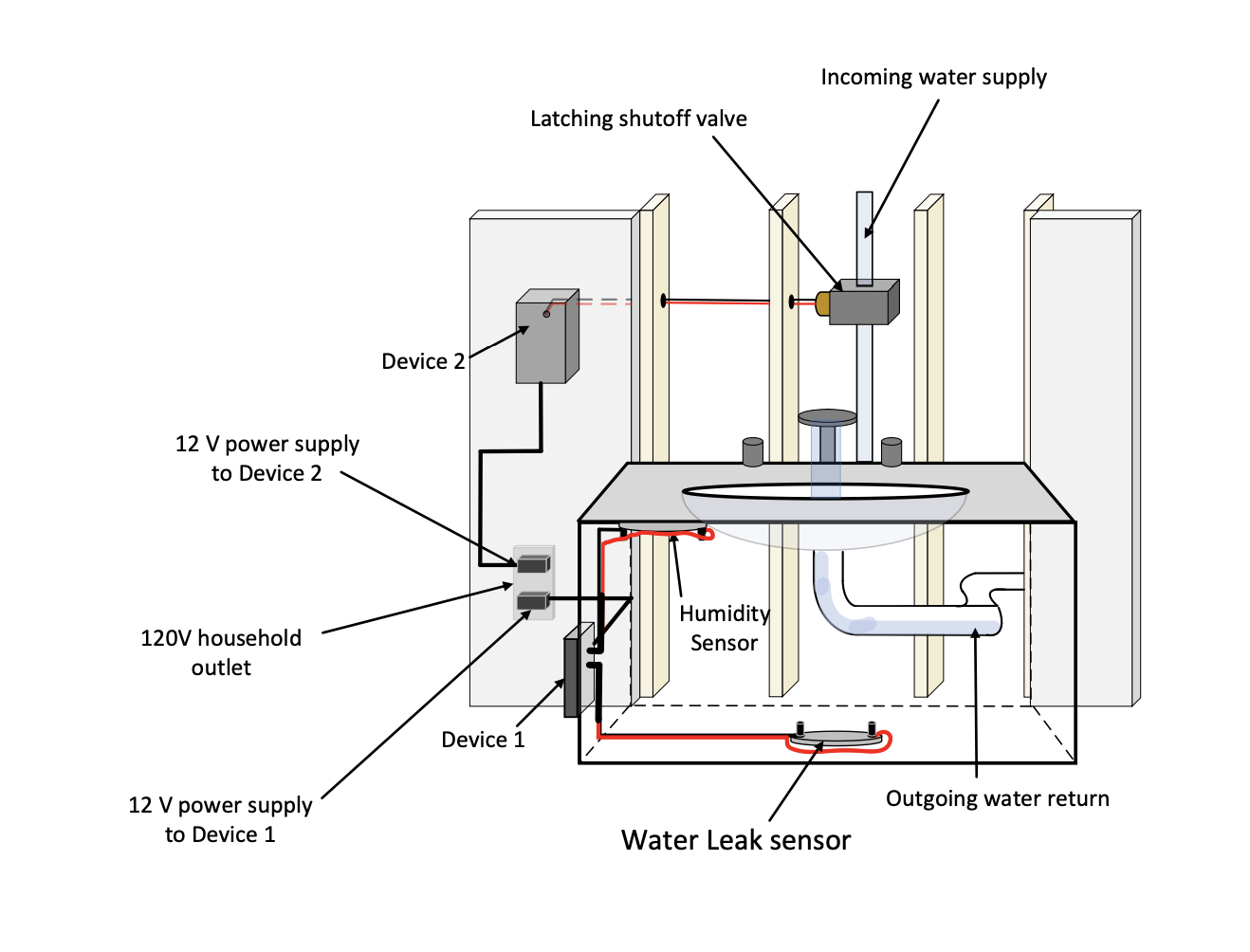
The system is a water leak detector is an electronic system that detects leaks using capacitive sensing with an Arduino Uno microcontroller. When a leak is detected, it sends an email alert and automatically shuts off a valve to prevent damage. A battery backup ensures operation during power outages, and Bluetooth communication allows remote monitoring. Designed for reliability and automation, the system provides an effective solution for early leak detection and response, enhancing home safety and preventing potential water damage.
- Team Members: Jacob Weslager, Malak Abdehamid, Rudy Gonzales, Anthonie Scott, David Khames
- Advisor: Prof. Barry Dorr - SDSU
- Sponsor: Professor Dorr
- Team The Flow Stoppers's Video
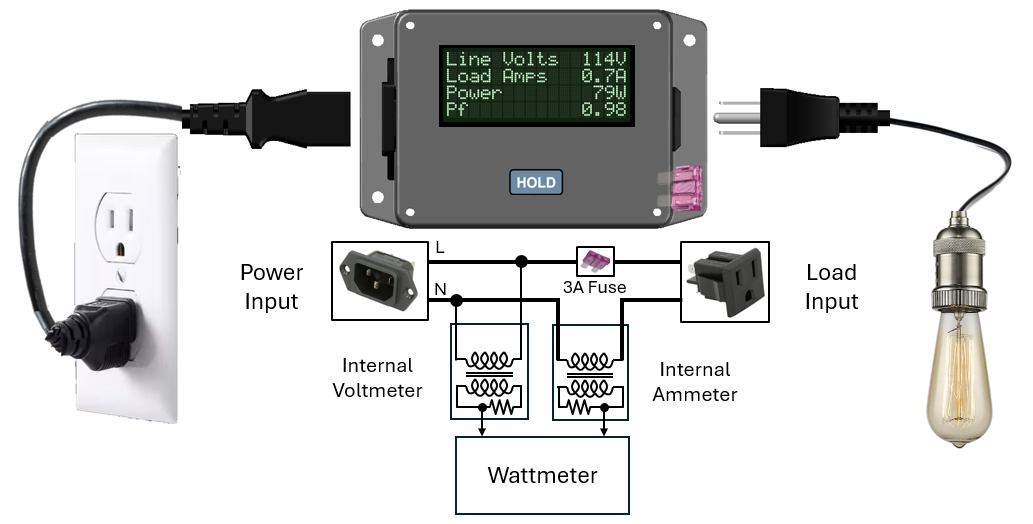
The Wattage Analysis System (WAS) is a single-phase pass through watt meter targeting appliances running from a 100V AC to 130V AC line voltage. The WAS measures current draw from 0.50A to 2.00A, power draw from 50W to 250W, and power factor from 0.80 to 0.99 with measurements tolerances of ±5%. The accompanying figures showcases its operation
- Team Members: Kyler Brown, Petros Kapetanios, Jacobo Puga, Nick Swanson, Victor Hugo Silva
- Advisor: Prof. Barry Dorr - SDSU
- Sponsor: SDSU Electrical and Computer Engineering
- Team W.A.S.'s Video
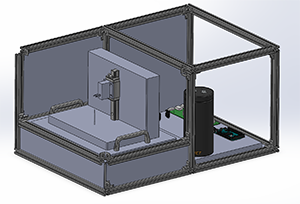
The Microwire Welder enables precise micro-actuation alignment for both fabrication and repair of wires on the micron scale. Fine-gauge thermocouples are fabricated by applying a high current pulse to electrically fuse two metal materials at a butt-junction. Additionally, hot-wire anemometers are repaired by aligning a wire to the prongs for easy and consistent soldering. This device aims to function without a lot of trial and error or user experience.
- Team Members: Jacob Morgan, Jose Oregel, Jocelin Cortez Ortega, Hector Molina, Robert Hild, Eric Brandenburg, John Hurt, David Scheffler, Easter Nabaty, Fausto Saavedra Gonzalez
- Advisors: Dr. Fletcher Miller - SDSU, Professor Barry Dorr - SDSU, Dr. Scott Shaffar - SDSU
- Sponsor: SDSU Mechanical Engineering
- Team Aztec Microwire Welding's Video
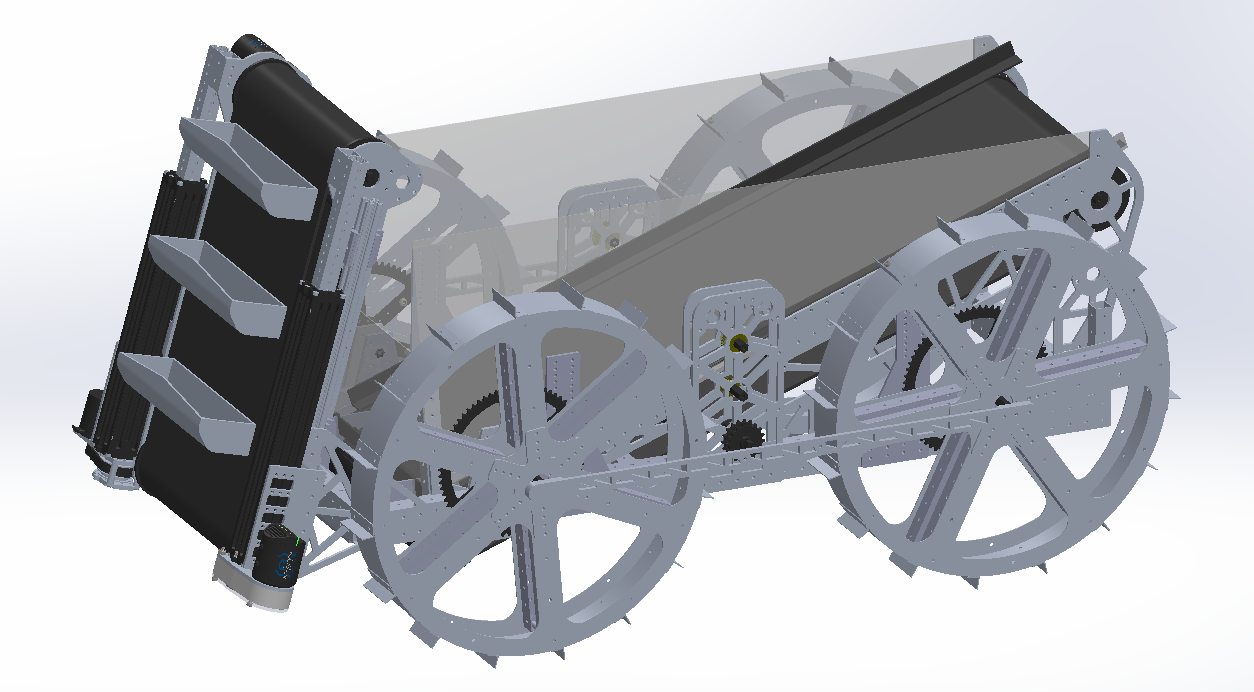
Team CREED (Collegiate Rover for Extraplanetary Excavation and Deposition) is representing San Diego State University in the NASA Lunabotics 2025 Competition. The team is tasked with the design and build of the propulsion system for a telerobotic rover capable of traversing, excavating, transporting, and depositing lunar regolith. This supports NASA’s Artemis missions, in which they plan to use in-situ resources for lunar construction. The team will travel to Iowa State University to compete in a simulated deployment mission against other national universities.
- Team Members: Courtney Olivier, Alex Christensen, Colin Ro, Khang Nguyen, William Traywick, Ryan Greaves, Garrett Guisinger, Steven Kourani, Rafael Lara, Felix Monasterio Mata
- Advisors: Dr. Scott Shaffar - SDSU, Professor Barry Dorr - SDSU, Ryan Liu - ExPost Technology & RJL Engineering
- Sponsors: SDSU Student Success Fee, SDSU Department of Mechanical Engineering
- Team C.R.E.E.D. - Propulsion Team's Video
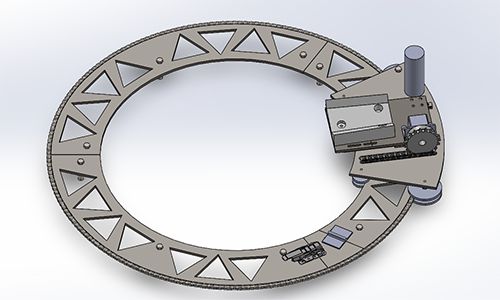
The robotic palm trimmer end effector is designed to replace manual palm trunk trimming and make trimming safer, easier, and cheaper. Using a circumferential track system and an active radial positioning stage, the tool will have a reach of 360° around the palm trunk. The trimmer will attach and interface with the Robotic Palm Elevator to achieve 6-degrees of motion around the palm tree. The Robotic Palm Tree Trimmer and Elevator will be operated manually utilizing the same controller and power source.
- Team Members: Arvin Espanta, Brayden Chau, Brandon Cooper, Lauren Miracle, Madison White, Abdul Karim Tamim, Erianna Dayrit, Gianluca Capirossi, Jackson Rayner, Leonardo Sebastian Martinez
- Advisors: Max Winiarz - Max Engineering, Dr. Scott Shaffar – SDSU, Professor Barry Dorr – SDSU
- Sponsor: Max Engineering
- Team Palm Patrol's Video
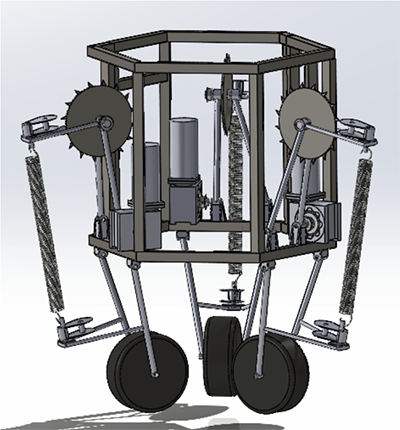
The Robotic Palm Elevator serves as a replacement for tree trimmers to move towards safer and efficient palm trimming. The elevator is to be installed around the tree and move vertically, controlled via use of a joystick controllable while applying constant tension and force on the arms. The elevator is also able to cut the fronds from the trees and hold it own weight. This is a continuation from last years project, designing and fabricating new components to complete the project.
- Team Members: Moises Mathew Edillor, Julius Fielder, Sebastian Gonzalez, Dante Monsalve, Renz Carlo Tan, Eric Hillen, Duy Huynn, Raheed Isaak, Ryan Maiden, Lukas Velasco
- Advisors: Max Winiarz - Max Engineering, Dr. Scott Shaffar – SDSU, Professor Barry Dorr – SDSU
- Sponsor: Max Engineering
- Team Palm Patrol's Video
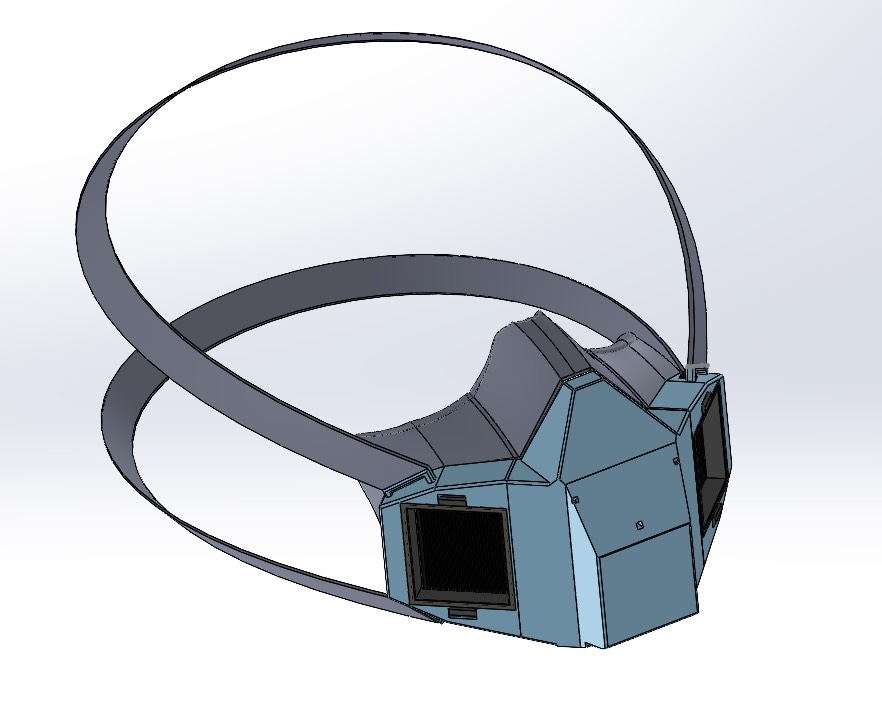
The joint Mechanical and Electrical team worked to develop an elastomeric half-mask respirator with integrated gas sensor technology for first responders. The final ergonomic design houses particulate matter, carbon dioxide, temperature, pressure, and humidity sensors connected via Bluetooth to a mobile app. This design demonstrates what is possible in the world of gas sensing and provides the groundwork for future iterations by AtmoSense.
- Team Members: Morgan Mcfarland, William Wesner, Alexander Griffin-Vigderovich, Matt Ruzzamenti, Darren Mansour, Khiet Nguyen, Elvis Thi, Eric Smith, Tye Williams, Harvie Porcadas
- Advisors: Dr. Mike Frank - AtmoSense, Tabib Hossain - AtmoSense, Dr. Scott Shaffar - SDSU, Professor Barry Dorr - SDSU
- Sponsor: AtmoSense
- Team SceneSafe's Video
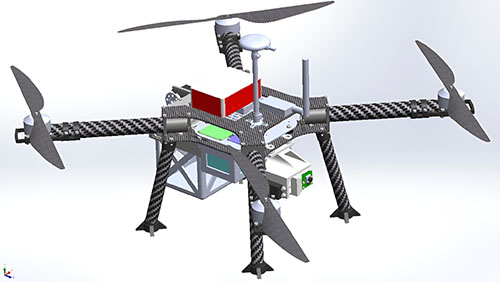
The California Unmanned Aerial System Competition requires students to design, integrate, and demonstrate a small Uncrewed Aerial System capable of waypoint navigation, package drop, package delivery, target identification, and target localization. This competition is organized by California State University and by Mojave Air & Space Port at Rutan Field. This competition is points-based, and open to teams of students from universities, colleges, and community colleges. The competition will be held at the Mojave Air & Space Port at Rutan Field on June 7th, 2025.
- Team Members: Nathan Lozano, Luis Laurean, Eddie Meza, Justin Ochoa, Allan Valdez, Luiz Gonzalez Bautista, Daniel Solomon, Flavio Signoretti, Jalen Jones, Sophia Garcia
- Advisors: Oscar Correa – SDSU, Dr. Scott Shaffar – SDSU, Professor Barry Dorr – SDSU
- Sponsors: SDSU Student Success Fee, SDSU Mechanical Engineering, California State University Los Angeles
Mojave Air & Space Port - Team S.T.O.R.K.'s Video
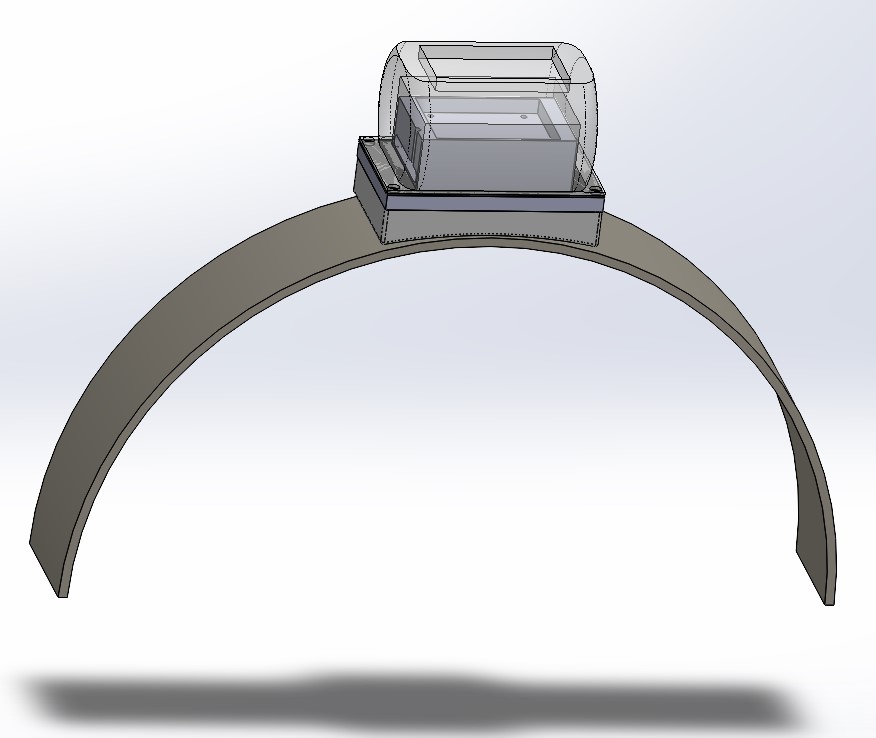
This project designs a durable, affordable elephant tracking collar housing with waterproof, impact-proof (IP67) protection and solar recharging for continuous use. It includes sensors to monitor movement and health, transmitting data via LoRa for reliable long-range tracking. The 3D-printed, twist-lock housing integrates seamlessly with the collar. With a $1,000 budget, it will be locally manufacturable in Kenya to support wildlife conservation through long-term, low-maintenance monitoring.
- Team Members: Zachary Watkins, Chase Duncan, Nolan Atkins, Jose Cardoso, Tommy Zheng, James Allison, Nathan Phan, Noah Frew
- Advisors: Dr. Kyra Swanson - SDZWA, Dr. Scott Shaffar - SDSU, Professor Barry Dorr - SDSU
- Sponsors: San Diego Zoo Wildlife Alliance
- Team The Herd's Video

